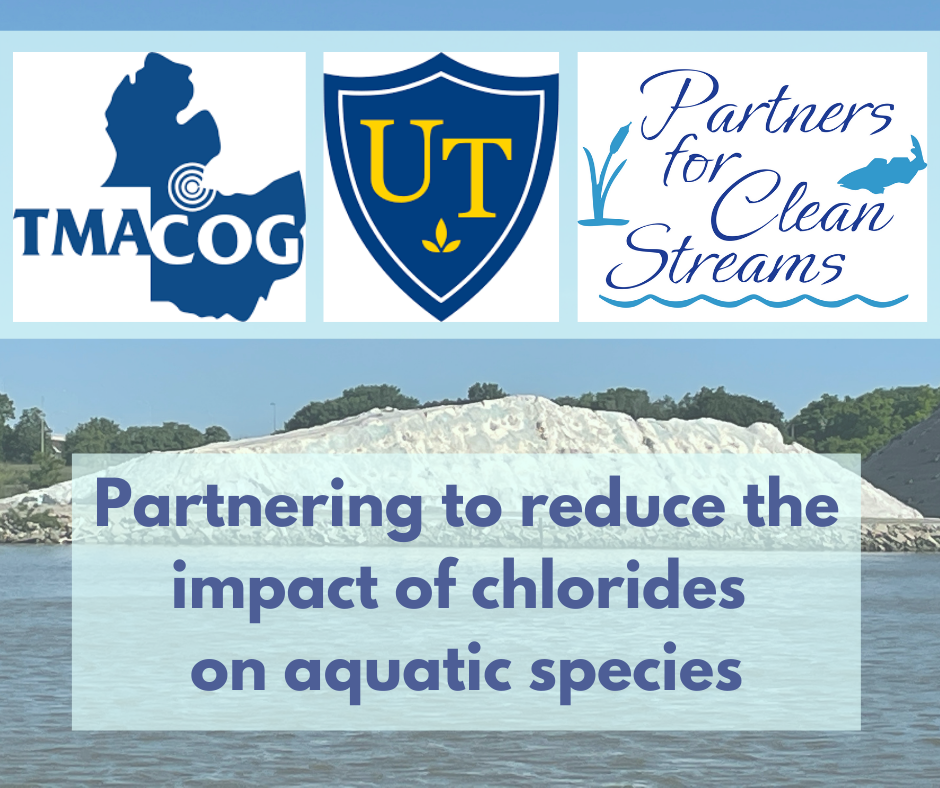
Every winter, rain and snow wash road salt into our ditches, streams, and rivers, which degrades water habitats by adding excess chlorides. Too much salt can be toxic for macroinvertebrates and fish. Experts agree that cutting down pollution at its sources will have a positive impact. Last year, a team of three MAAC collaborators began a multi-phase project to do exactly that, targeting BUI 6 (Degradation of Benthos) and BUI 3a (Degradation of Fish Populations).
In 2021, the Ohio EPA awarded a GLRI grant to the University of Toledo (UT), Toledo Metropolitan Area Council of Governments (TMACOG), and Partners for Clean Streams (PCS), to work together to better understand current conditions of urban streams in the AOC and make recommendations on how to reduce road salt pollution. Phase one of this project is titled “Reducing the impacts of chloride on aquatic species in the Maumee Area of Concern,” and it is underway for three years.
Phase one focuses on developing a suite of best management practices to target specific areas in the AOC that show excess chlorides and severely degraded benthos. UT has focused on extensive chloride sampling and impacts to the streams so that we have a robust and accurate data source to use to pinpoint areas of extreme elevation and degradation. TMACOG is working with local municipalities to identify policies and specific equipment upgrades to reduce salt pollution, and PCS is integrating the proposed projects or equipment upgrades into updated Non-Point Source Implementation Strategies that get approved by Ohio EPA and help connect local entities to future funding and state-wide resources to reduce chlorides impacts to the streams.
Over the next few years, this chloride reduction project will play a role in supporting the removal of BUIs 6 and 3a.
